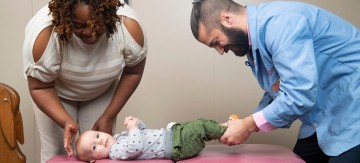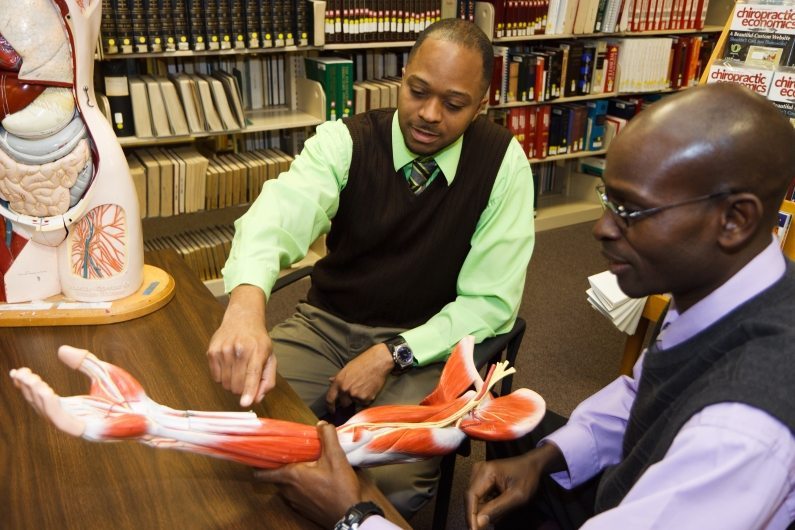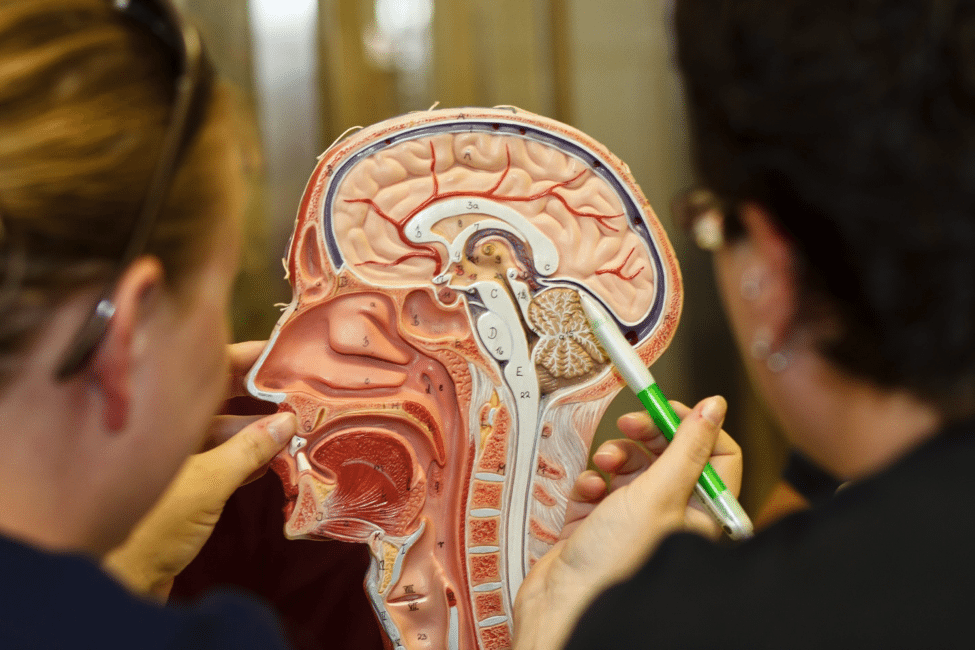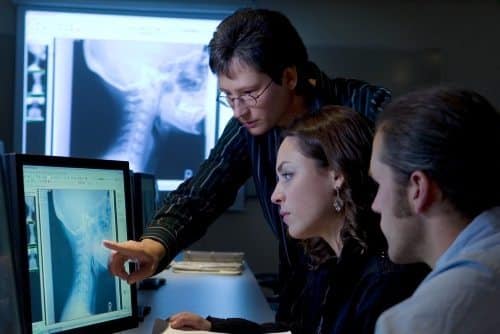[et_pb_section bb_built=”1″ admin_label=”section”][et_pb_row admin_label=”row” background_position=”top_left” background_repeat=”repeat” background_size=”initial”][et_pb_column type=”4_4″][et_pb_text _builder_version=”3.0.93″ background_layout=”light” border_style=”solid” header_text_align=”center”]
A Chiropractor’s Guide to the Fascinating History of Human Anatomy
[/et_pb_text][et_pb_text _builder_version=”3.0.93″ background_layout=”light”]
Students beginning their chiropractic education can expect to complete several demanding but interesting courses in anatomy and neuroanatomy. They will study the human body in incredible detail, down to individual cells and tissues.
While basic concepts like the heart’s ability to pump blood might sound simple, what we often forget is that our knowledge of the human physique is the product of centuries of meticulous research. We take it for granted that we know the heart is not the seat of human intelligence, and that arteries don’t transport air throughout the body. But that wasn’t always the case.
Read on to find out how the study of human anatomy has advanced and led to a profound understanding of how the body operates.
Ancient Egyptians and the First Studies of Human Anatomy
During the 3rd century BC, the city of Alexandria in Egypt was a vast center for learning and education. Scientific discovery flourished, and two brilliant anatomists – Herophilus and Erasistratus – made ground-breaking discoveries about the human form.
Until then, the study of anatomy had relied on observations of living human bodies and on animal dissections. As a result, doctors assumed several things about the human body that was not true. Aristotle, for example, thought that the heart was responsible for human consciousness and intelligence.
Herophilus was the first person in history to dissect a human body and soon discovered that the brain was the center of intelligence, not the heart. Erasistratus extended on Herophilus’ discovery and developed a theory that suggested the heart acted as a pump.
Galen and the Study of Anatomy in the Roman Empire
While Herophilus and Erasistratus had made important advances in the field of human anatomy, doctors still believed much incorrect information about the human build and how it worked.
They believed, for example, that arteries transported air throughout the body. And while they understood that the body had an ability to heal itself – something doctors of chiropractic deal with daily and refers to as innate intelligence – they thought that this was due to a delicate balance between four humors: blood, black bile, yellow bile, and phlegm.
Galen disproved some of these theories while he worked as chief physician to the gladiators in his home city of Pergamon. He used his insights from treating injuries and dissecting animals to confirm that arteries did not contain air. He also studied the nervous system and distinguished between motor and sensory nerves but, unfortunately, continued to promote the humorist theory.
The Revival of Anatomy and Chiropractic Science Today
After the fall of the Roman Empire, the study of anatomy stopped for more than 1,000 years. Doctors instead relied on the works of Galen, and no significant studies of the human body were conducted until the Renaissance. During the Renaissance, Andreas Vesalius challenged many of Galen’s theories, including his theories about the circulatory system. Vesalius promoted the study of the human body through dissection and inspired a revival in the study of the human form.
During the 17th and 18th centuries, the study of anatomy continued to improve our understanding of the human body by leaps and bounds. Humorist theory was replaced by our current understanding of pathology, and doctors discovered the functions of each of the vital organs.
Now, thanks to centuries of discoveries, students completing their chiropractic training have a profound understanding of how the human body operates. And, as researchers continue to make new discoveries through research and technology, we will continue to push forward in our understanding of anatomy.
What new research do you think will advance the field of chiropractic science?
[/et_pb_text][/et_pb_column][/et_pb_row][et_pb_row _builder_version=”3.0.49″ background_position_1=”top_left” background_repeat_1=”no-repeat” background_position_2=”top_left” background_repeat_2=”no-repeat” background_position_3=”top_left” background_repeat_3=”no-repeat”][et_pb_column type=”1_3″][et_pb_post_nav _builder_version=”3.0.49″ in_same_term=”off” hide_prev=”off” hide_next=”on” border_style=”solid” border_color=”#0c71c3″ title_font=”|on|||” title_font_size=”16px” show_prev=”on” show_next=”off” /][/et_pb_column][et_pb_column type=”1_3″][/et_pb_column][et_pb_column type=”1_3″][et_pb_post_nav _builder_version=”3.0.49″ in_same_term=”off” hide_prev=”on” hide_next=”off” border_style=”solid” border_color=”#0c71c3″ title_font=”|on|||” title_font_size=”16px” show_prev=”off” show_next=”on” /][/et_pb_column][/et_pb_row][/et_pb_section]








